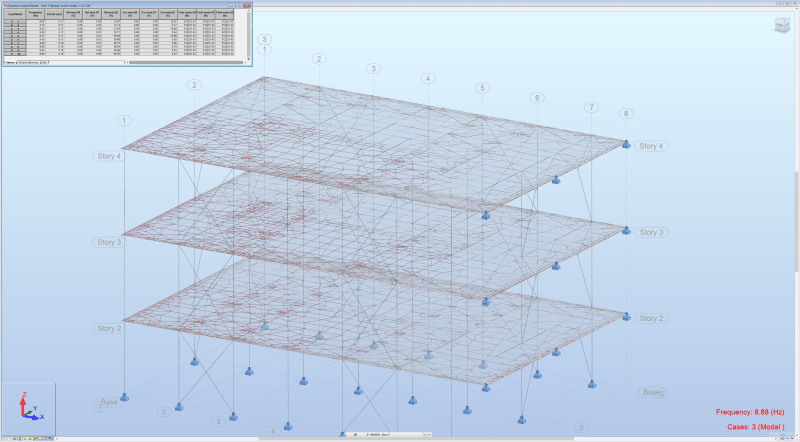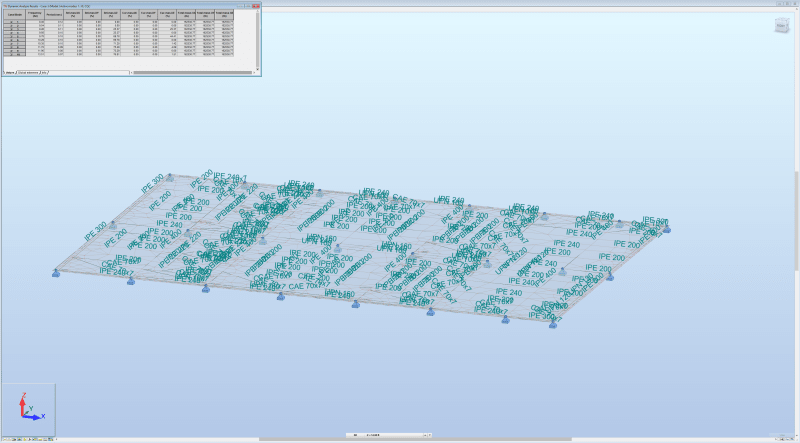marwin23
Structural
- Oct 2, 2019
- 21
Good morning,
I am looking for a piece of advise how to solve the issue when placing industrial equipment on an existing steel structure.
In details: 4sty existing steel frame (columns, beams + metal deck w/concrete) carries currently some flour mill equipment (old, mostly to be replaced). Some units of the new equipment to be placed on the top floor (can not on ground) have an operating frequency between 7-14HZ, whereas it seems that structure natural frequency is close to 8.5HZ. As per manufacturer, I can not provide dampers in between unit and my floor - however here if someone has any experience to argue this statement, then it would be good.
My first thought is:
- Unit operating weight is roughly 5kips. If I pour a block of additional 15kips, then (since mass is in square root (Sqrt(k/m)->(Sqrt(k/(m+3m))) I may be able to reduce the system output frequency twice to 3.5-7HZ. Or maybe it does not work that way, and concrete block would gladly transfer 14HZ from equipment to my deck without damping it (that would be against newton laws probably, but just want to assure myself).
I probably can someone support this weight on the current structure or reinforce as necessary. But at the same time such block would reduce my natural frequency of whole structure (but that would be just a fraction of whole weight). Does this approach make sense?
If someone has any experience - I would appreciate your input!
I am looking for a piece of advise how to solve the issue when placing industrial equipment on an existing steel structure.
In details: 4sty existing steel frame (columns, beams + metal deck w/concrete) carries currently some flour mill equipment (old, mostly to be replaced). Some units of the new equipment to be placed on the top floor (can not on ground) have an operating frequency between 7-14HZ, whereas it seems that structure natural frequency is close to 8.5HZ. As per manufacturer, I can not provide dampers in between unit and my floor - however here if someone has any experience to argue this statement, then it would be good.
My first thought is:
- Unit operating weight is roughly 5kips. If I pour a block of additional 15kips, then (since mass is in square root (Sqrt(k/m)->(Sqrt(k/(m+3m))) I may be able to reduce the system output frequency twice to 3.5-7HZ. Or maybe it does not work that way, and concrete block would gladly transfer 14HZ from equipment to my deck without damping it (that would be against newton laws probably, but just want to assure myself).
I probably can someone support this weight on the current structure or reinforce as necessary. But at the same time such block would reduce my natural frequency of whole structure (but that would be just a fraction of whole weight). Does this approach make sense?
If someone has any experience - I would appreciate your input!

![[thumbsup2] [thumbsup2] [thumbsup2]](/data/assets/smilies/thumbsup2.gif) Probably the most generous complement that I have had on this forum! Though possibly somewhat undeserved, I'm still working hard to become 'experienced'.
Probably the most generous complement that I have had on this forum! Though possibly somewhat undeserved, I'm still working hard to become 'experienced'. ![[smile] [smile] [smile]](/data/assets/smilies/smile.gif) That said I do deal with Buhler equipment regularly.
That said I do deal with Buhler equipment regularly.

